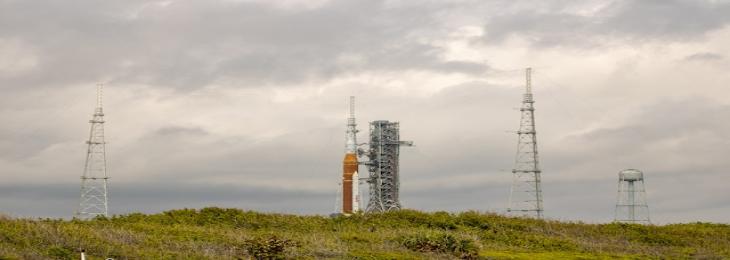NASA Repairs The Leaking Fuel Seals On Artemis 1
Sep, 2022 - By SMI

Share
As early as September 17th, a fuelling test might take place.
The Space Launch System (SLS) rocket from NASA's next generation has successfully undergone a crucial repair. Engineers patched the faulty seal on Friday, which was the cause of the agency's most recent failure to launch Artemis 1. A fitting on one of the SLS's fuel lines started leaking hydrogen on September 3rd. Three times the ground staff at Kennedy Space Center attempted to fix the issue, but the leak continued, prompting NASA to abort the launch attempt. Engineers also repaired a 4-inch hydrogen "bleed line" on Friday after a smaller leak during a previous launch attempt on August 29th.
NASA intends to do a fuelling test after installing the new gaskets to ensure they are functioning as anticipated. Engineers will aim to fill the SLS with all 736,000 gallons of liquid hydrogen and oxygen that it would require on a typical flight during the dry run. As early as September 17, NASA aims to successfully execute that test. The demonstration, according to the agency, "would enable engineers to test the new seals under cryogenic temperatures as planned on launch day and before to moving on to the next launch attempt."
NASA said on Thursday that it planned to launch Artemis 1 again on September 23rd, with September 27th as a fallback. The results of the fuelling test scheduled for next week and the US Space Force's decision will determine if it can meet those dates. Every 20 days, NASA is required by flight regulations to check the battery of Artemis 1's flight termination mechanism. It can only carry out its function within the Vehicle Assembly Building at the Kennedy Space Center. The agency had previously received a 20-day extension from the Space Force. Now, NASA has requested another waiver.
Share
Stratagem Market Insights
533 Airport Boulevard, Suite 400, Burlingame, CA 94010, United States
Delivery Center
403, 4th Floor, Bremen Business Center
Aundh, Pune, Maharashtra 411007
India
